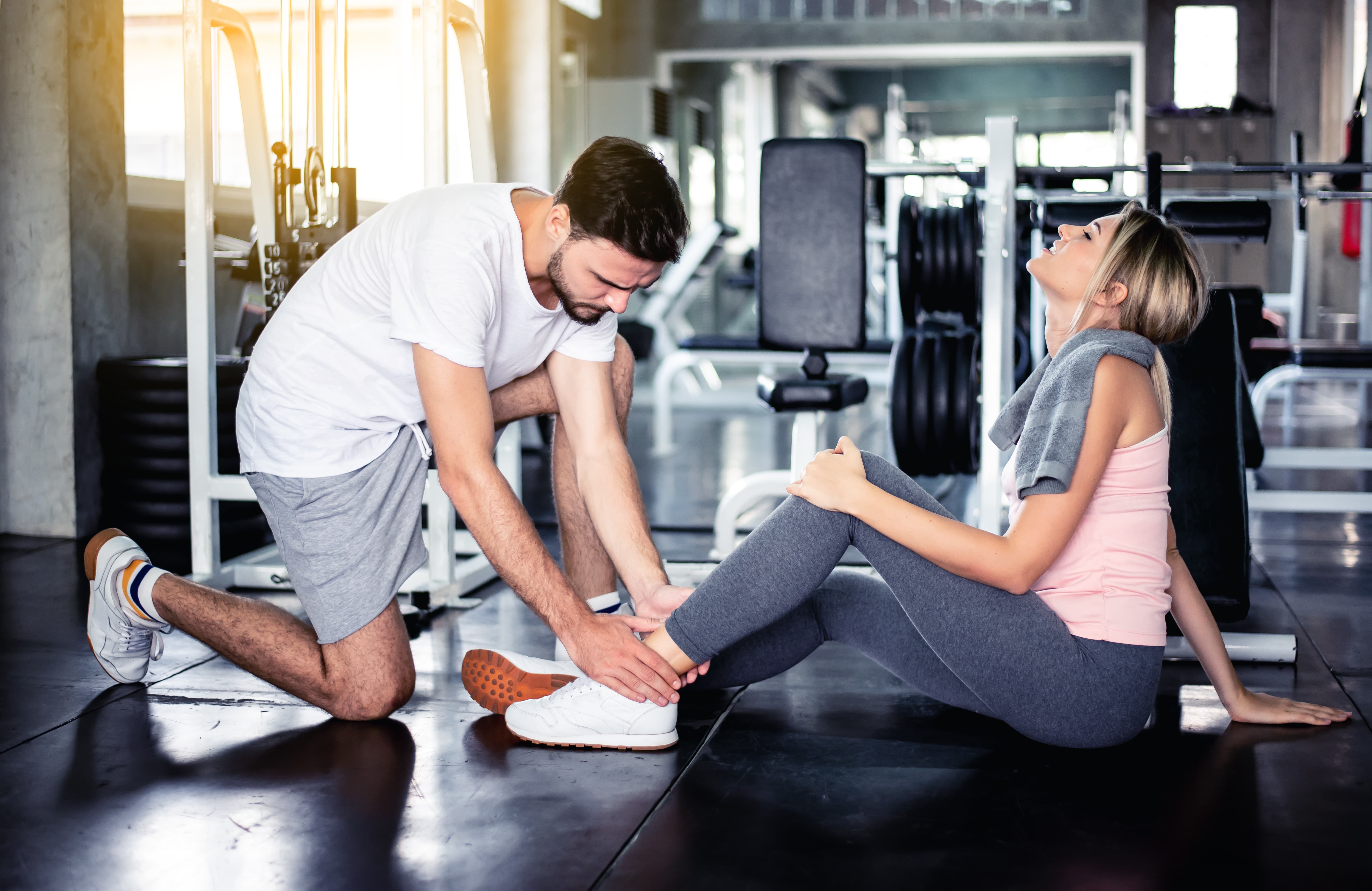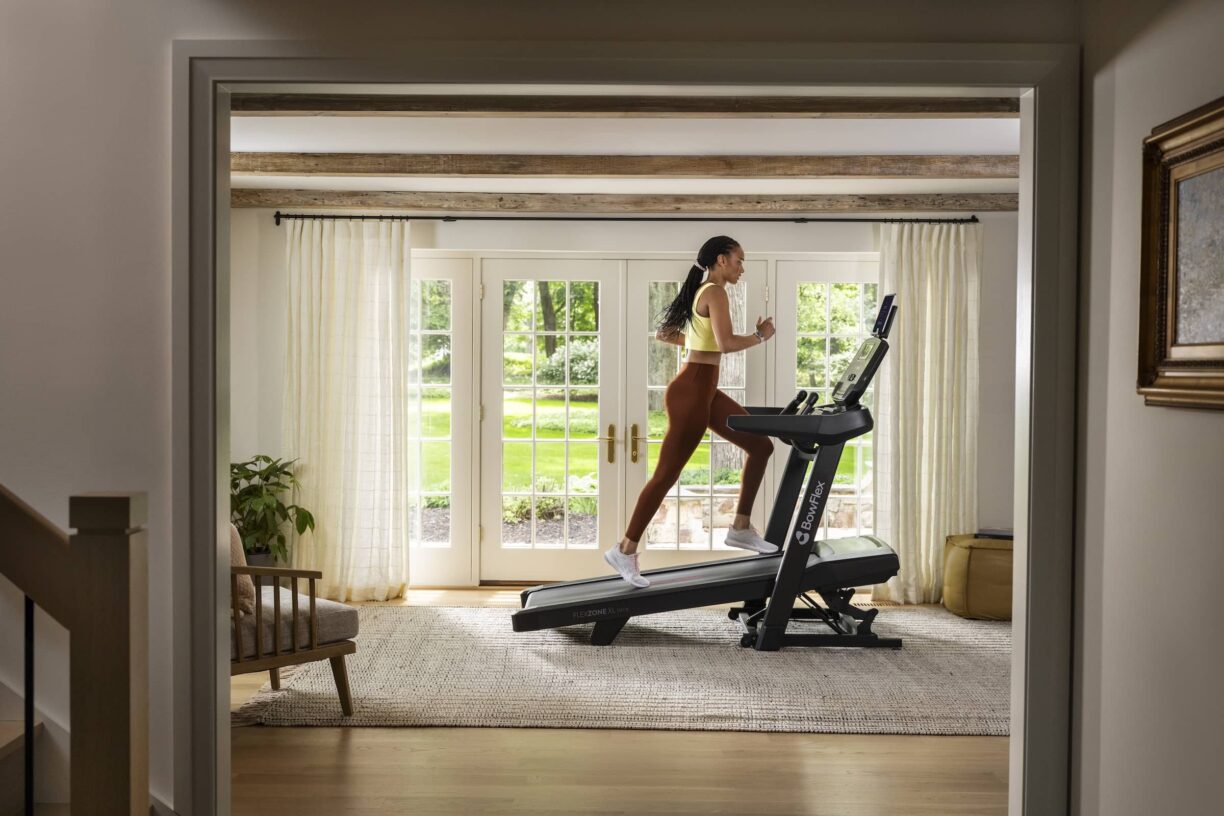The reopening of gyms this year following a months-long winter lockdown was music to the ears of fitness enthusiasts, but following an extended period of altered or reduced exercise, is it really possible to pick up where you left off?
Here, leading New Victoria Hospital physiotherapist Tom Stukins tells you everything you need to know about reincorporating your gym routine and remaining injury free.
What to watch out for
You’re at a higher risk of injury
Despite our best efforts, many of us have seen reduced activity levels following lockdown, with Fitbit reporting as much as a 12% drop in activity of users.
As such, says Tom, you’re more likely to sustain an injury if you hit the gym too hard upon return.
“When someone becomes more sedentary through circumstance such as lockdown, then the body will start to decondition.
This means that muscle strength, joint flexibility and cardiovascular fitness will decline. This increases the likelihood of injury as the body is less able to cope with the demands placed upon it through intense physical exercise/exertion.”
This was proven by Germany’s Budesliga football team, who returned to playing on May 11th following the first global lockdown in 2020 and found that injury average per game increased threefold.
Poor home-working posture could cause problems
With months spent at makeshift work stations and with less excuses to get up and leave our working environment, many of us have developed poor posture, which Tom says, in turn, can lead to injury.
“At New Victoria Physiotherapy we’ve seen a significant rise in postural pain, knee related running injuries and frozen shoulders.”
Recognising these trends we can extrapolate that high risk areas when returning to the gym are likely to be as follows:
- lower back injuries from lifting heavy weights in a squat, dead lifting or through poor technique (due to postural weakening).
- Shoulder impingement and soft tissue injuries from overhead lifts (due to sitting for long hours with rounded shoulders at a desk).
- Knee injuries from treadmill/ running exercises (due to weakened leg muscles from prolonged periods of sitting).
- ankle injuries and muscle strains due to the high impact and multi-directional nature of classes such as body combat, HIIT, boxercise and cross fit
Age and general health could impact your training
Those who’ve been part of an at-risk category or suffered with illness during the last year, should ease themselves back into a routine, Tom suggests.
“Inevitably the older we get the quicker we decondition, losing our strength and fitness more quickly than we’d like.
But in addition, anyone who has been unwell during the last year and anyone who has already been injured during lockdown needs to take additional care when resuming normal activity.”
How to reduce the risk of injury
Tom’s top tips for returning to your favourite gym routine and coming away injury-free are:
- Ease back into your normal levels of exercise gradually to allow your body time to adjust without over-stressing the musculo-skeletal system.
- Reduce the weight you lift or push by 40%. Week on week you can increase the weight to gradually build back up to your pre-lockdown levels. This will take about 20-25 reps to achieve fatigue in the muscles without overloading them, allowing them to recondition in preparation for heavier weights over time.
- When resuming running, use intervals of walking to break up the impact and gradually build up to your desired distance. This principle can also be applied to rowing on an ergo whereby you do some lower intensity intervals to allow the back muscles to recover and minimise the risk of lower back pain.
- Avoid exercising if you are already fatigued as this will affect your concentration and increase the risk of joint and muscle injuries.
- Eat and rest well between gym sessions
About New Victoria Physiotherapy
New Victoria Physiotherapy works alongside highly trained hospital Consultants, Physiotherapists and an impressive Imaging Department, providing physiotherapy for a wide range of conditions including post operative rehabilitation following orthopaedic procedures, back and neck pain, sports injuries, hand therapy and more.





